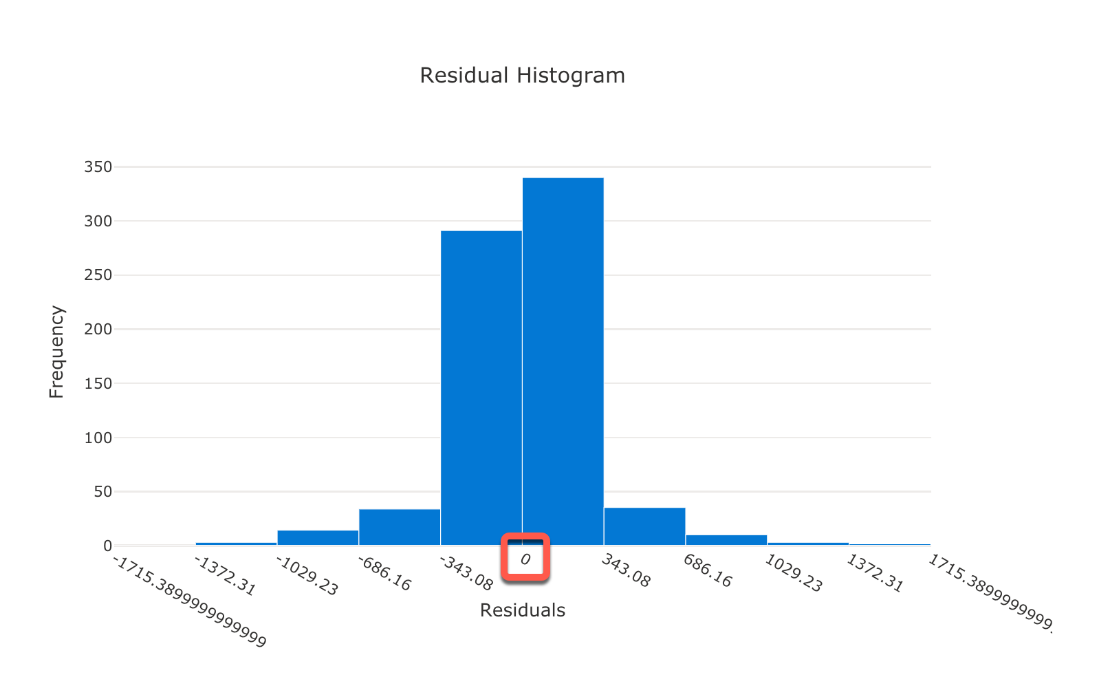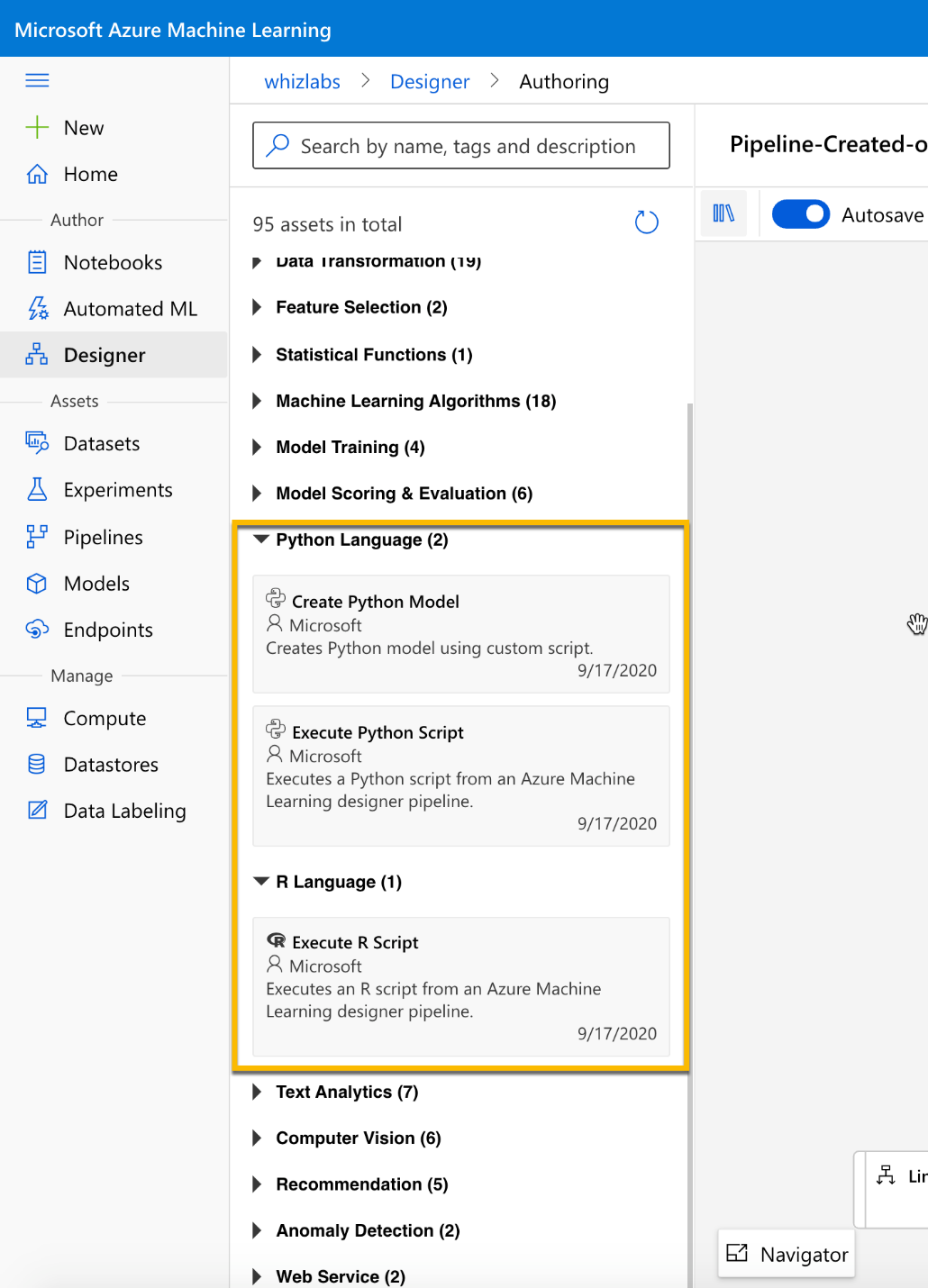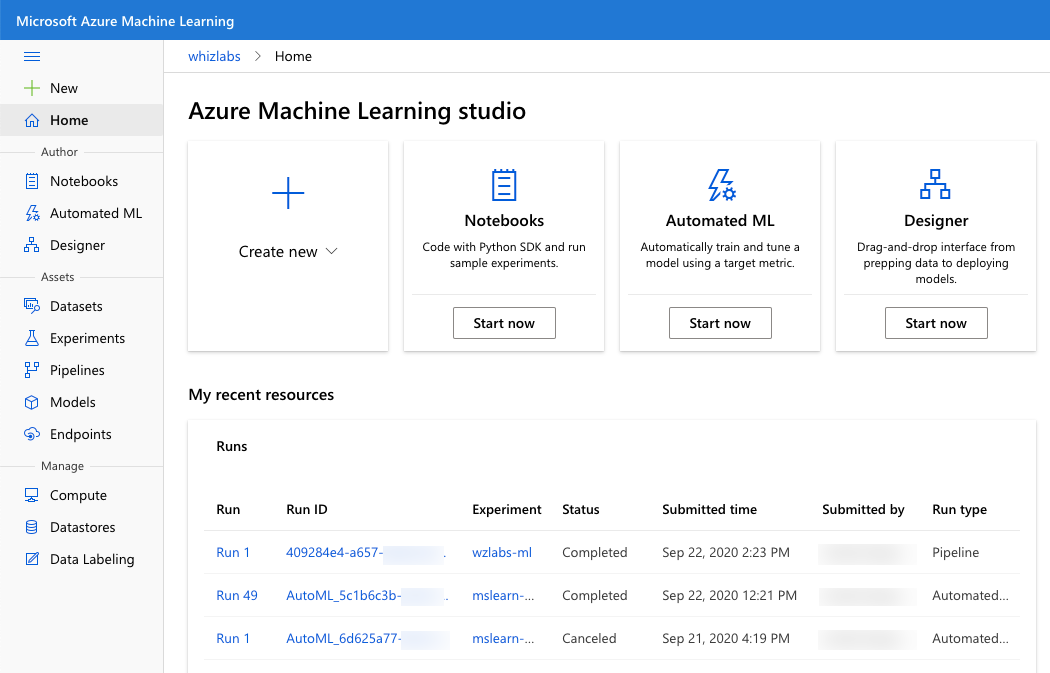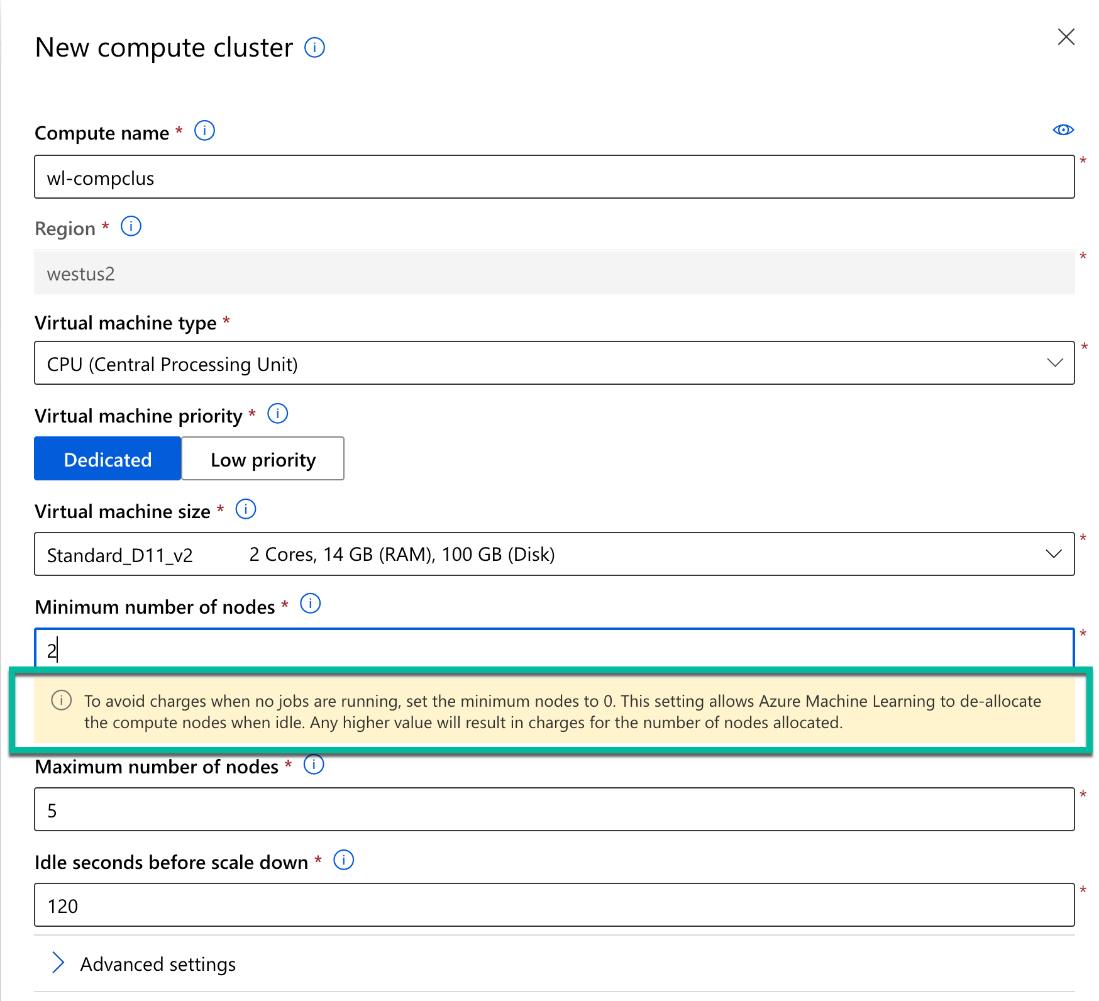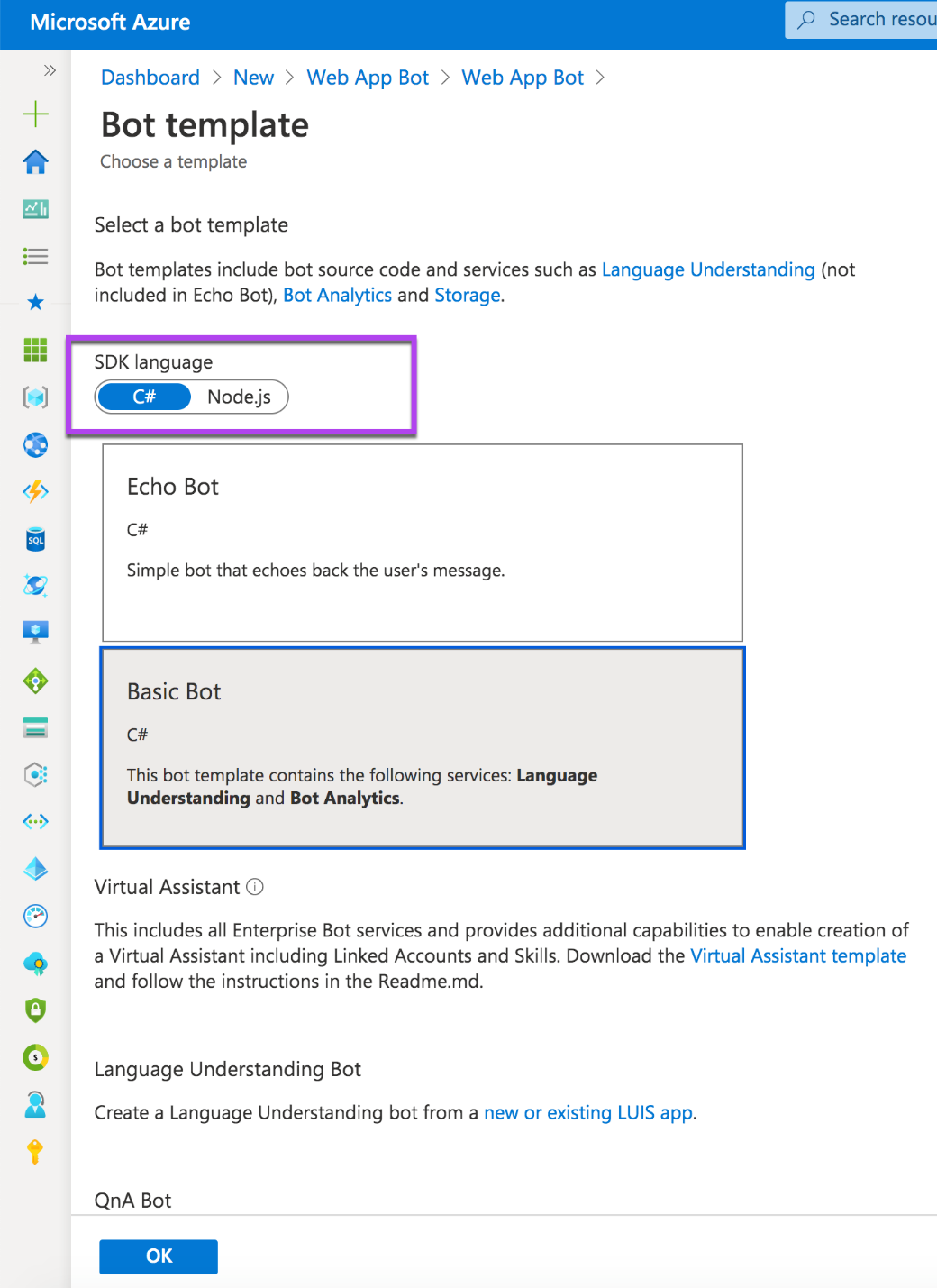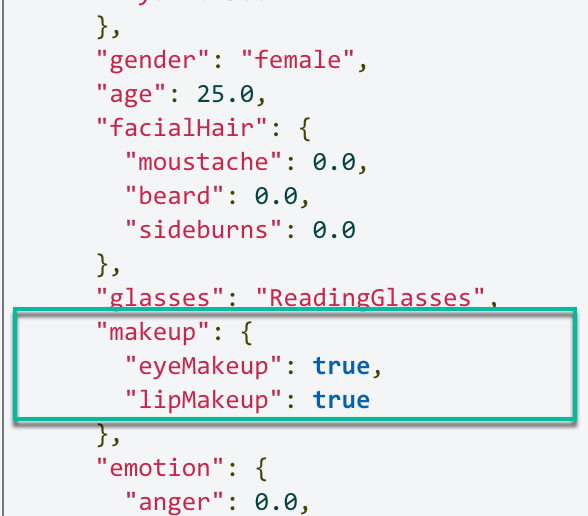The AI-900: Microsoft Azure AI Fundamentals certification requires you to have an understanding of the concepts of Artificial Intelligence and Machine Learning, their workloads, and implementation on Azure. These free AI-900 exam questions will provide you with an insight into some of the concepts and skills measured in the AI-900 certification.
Let’s start learning!
Domain : Describe fundamental principles of machine learning on Azure
Q1 : You are working for a car dealership. Your boss asks you to provide him with forecast information. Will the new car model be successful or not? The new model has a variety of engine improvements, more comfortable seats, and a sunroof. You compiled the list of data about previous successful models with their characteristics and sales numbers.
What should you do in the pre-processing data stage that would help you predict the new model’s success?
A. Data selection
B. Training set selection
C. Data for model evaluation selection
D. Feature selection
E. Data classification
Correct Answer: D
Explanation
During pre-processing, you need to work with data to select features that influence the label prediction. In this problem, features are the engine characteristics (power or volume), seat comforts, etc. They could help the ML model to predict the success of the new car model. Maybe the sunroof is not essential for predicting the label, and we need to discard this feature from the final set of features that we will use for model training.
In short, Feature selection helps us to narrow down the features that are important for our label prediction and discard all features that don’t play or play a minimal role in a label prediction. As a result, our trained model and prediction will be more efficient.
All other options are incorrect because they are parts of the different data processing events that are irrelevant to the pre-processing (Training set selection or Data for model evaluation selection) or too generic (Data selection or Data Classification).
For more information about Feature selection, please visit the below URL: https://docs.microsoft.com/en-us/azure/machine-learning/team-data-science-process/select-features.
Domain : Describe features of computer vision workloads on Azure
Q2 : You created a Custom Vision model. You want your model to detect trained objects on the photos. What information will you get about each object if you are using an object detection model?
A. Image type
B. Bounding box
C. Image category
D. Class name
E. Probability score
F. Content name
Correct Answers: B, D and E
Explanation
Object detection is the form of ML that helps to recognize objects on the images. Each recognizable object will be put in the bounding box with the class name and probability score.
Here is the Microsoft information about the object detection model.
All other options are incorrect because they are not part of the object detection model’s return information.
For more information about Object detection, please visit the below URL: https://docs.microsoft.com/en-us/learn/modules/detect-objects-images-custom-vision/1-introduction.
Domain : Describe features of Natural Language Processing (NLP) workloads on Azure
Q3 : What are the four types of entities that you can create during the authoring of the LUIS Application?
A. Machine-Learned
B. List
C. FAQ document
D. RegEx
E. Chit-chat
F. Pattern.any
G. Alternative phrasing
Correct Answers: A, B, D and F
Explanation
We need to create intents, entities, and train a model during an authoring phase for a Language Understanding application. There are four types of entities that we can create, such as, Machine-Learned, List, RegEx, and Pattern.any.
All other options are incorrect because they are parts of creating a Knowledge base for Q&A Maker and Azure Bot Service.
For more information about LUIS, please visit the below URLs: https://docs.microsoft.com/en-us/learn/modules/create-language-model-with-language-understanding/2-get-started , https://www.luis.ai/
Domain : Describe AI workloads and considerations
Q4 : What are the main features and capabilities of Azure Machine Learning?
A. Anomaly Detection
B. Pipelines
C. Object Detection
D. Automated machine learning
E. Azure Machine Learning designer
F. Text Analytics
G. Data and compute management
Correct Answers: B, D, E and G
Explanation
Azure Machine Learning is the foundation for Artificial Intelligence service. It includes four features and capabilities.
- Automated machine learning – automated creation of ML models based on your data; doesn’t require any data science experience.
- Azure Machine Learning designer – a graphical interface for no-code creation of the ML solutions
- Data and Compute management – cloud-based tools for data science professionals,
- Pipelines – visual designer for creating ML tasks workflow
Option A is incorrect. Anomaly Detection – is one of the key elements of Artificial Intelligence, and it is not a feature of Machine Learning.
Option C is incorrect. Object Detection is one of Computer Vision’s common tasks and is not part of Machine Learning.
Option F is incorrect. Text Analytics – is a feature of Natural language processing and is not a part of Machine Learning.
For more information about the features and capabilities of Machine Learning, please visit the below URL: https://docs.microsoft.com/en-us/learn/modules/get-started-ai-fundamentals/2-understand-machine-learn
Domain : Describe fundamental principles of machine learning on Azure
Q5 : When you are creating a Clustering Model, what common ML algorithm are you using?
A. Multiclass Logistic Regression
B. K-means
C. Linear Regression
D. Two-Class Neural Network
E. Decision Forest Regression
Correct Answer: B
Explanation
The Clustering is a Machine Learning form that groups items based on some common properties.
The most common Clustering algorithm is K-means Clustering.
Option A is incorrect because the Multiclass Logistic Regression is a Classification algorithm based on a decision forest algorithm.
Option C is incorrect because the Linear Regression algorithm is a Regression algorithm based on a linear regression model.
Option D is incorrect because the Two-Class Neural Network is a Classification algorithm based on a neural network algorithm.
Option E is incorrect because the Decision Forest Regression algorithm is a Regression algorithm based on a decision forest algorithm.
For more information about K-means Clustering, please visit the below URL: https://docs.microsoft.com/en-us/learn/modules/create-clustering-model-azure-machine-learning-designer/create-training-pipeline.
Domain : Describe fundamental principles of machine learning on Azure
Q6 : What are the four typical steps of data transformation for model training?
A. Feature selection
B. Finding and removing data outliers
C. Split data
D. Impute missing values
E. ML algorithm selection
F. Normalize numeric features
Correct Answers: A, B, D and F
Explanation
After we ingest the data, we need to do a data preparation or transformation before supplying it for model training. There are four typical steps for data transformation such as Feature selection, Finding and removing data outliers, Impute missing values, and Normalize numeric features.
Option C is incorrect because Split data is coming after data transformation.
Option D is incorrect because ML algorithm selection data is coming after data transformation and Split Data steps.
For more information about Azure ML algorithms, please visit the below URL: https://docs.microsoft.com/en-us/learn/modules/create-regression-model-azure-machine-learning-designer/explore-data.
Domain : Describe features of computer vision workloads on Azure
Q7 : Please select three key fields that Form Recognizer service extracts from the common receipts.
A. Today’s date
B. Time of transaction
C. Taxes paid
D. Source of payment
E. Merchant information
F. Promotion information
Correct Answers: B, C and E
Explanation
Form Recognizer service is one of the Azure Computer vision solutions additional to Computer Vision service, Custom Vision Service and Face service.
Form Recognizer service uses pre-build receipt models to extract such information from receipts: date of transaction, time of the transaction, merchant information, taxes paid and receipt total. The service also recognizes all text on the receipt and returns it.
All other options are incorrect.
For more information about Custom vision, please visit the below URL: https://docs.microsoft.com/en-us/learn/modules/analyze-receipts-form-recognizer/2-receipts-azure
Domain : Describe features of Natural Language Processing (NLP) workloads on Azure
Q8 : What services are involved in live speech translation?
A. Speech Recognition
B. Speech-to-Text
C. Language Detection
D. Speech Correction
E. Text Analysis
F. Machine Translation
G. Text-to-Speech
Correct Answers: B, D, F and G
Explanation
Live speech translation involves the following sequence of the services during the real-time audio stream- Speech-to-Text -> Speech Correction -> Machine Translation -> Text-to-Speech.
The Microsoft documentation has the following diagram for the speech translation process.
Options A is incorrect because the Speech Recognition is not involved in this process. You can define from and to translation languages in Speech Translation service settings.
Option E is incorrect because we are not using Text Analysis services in this case.
For more information about LUIS, please visit the below URLs: https://azure.microsoft.com/en-us/services/cognitive-services/speech-translation/#features, https://docs.microsoft.com/en-us/learn/modules/translate-speech-speech-service/1-introduction-speech-translation
Domain : Describe AI workloads and considerations
Q9 : You created a Personal Virtual Assistant.
Select all responsible AI principles that your solution must follow.
A. Responsiveness
B. Privacy and security
C. Dependability
D. Inclusiveness
E. Answerability
F. Reliability and safety
Correct Answers: B, D and F
Explanation
Microsoft recognizes six principles of responsible AI, mentioned below.
Fairness, Reliability and safety, Privacy and security, Transparency, Inclusiveness and Accountability.
All other options are incorrect.
For more information about guiding principles for responsible AI, please visit the below URLs: https://www.microsoft.com/en-us/ai/responsible-ai?activetab=pivot1:primaryr6, https://docs.microsoft.com/en-us/learn/modules/responsible-ai-principles/4-guiding-principles
Domain : Describe fundamental principles of machine learning on Azure
Q10 : You create a regression model with low RMSE and review the best model metrics.
Where on the Residual histogram should the most frequently occurring residual values cluster for your model?
A. 1
B. 0.5
C. 0
D. -1
E. 2
F. -0.5
Correct Answer: C
Explanation
The Residual histogram presents the frequency of residual values distribution. Residual is the difference between predicted and actual values. It represents the amount of error in the model.
If we have a good model, we should expect that most of the errors are small. They will cluster around 0 on the Residual histogram.
All other options are incorrect.
For more information about Azure ML Residual histogram, please visit the below URL: https://docs.microsoft.com/en-us/learn/modules/use-automated-machine-learning/use-auto-ml.
Domain : Describe fundamental principles of machine learning on Azure
Q11 : You are creating a pipeline in Azure ML Designer. You need to add a module to execute the programming code. What languages can you use for code execution in Azure ML Designer?
A. C++
B. Java
C. Python
D. TypeScript
E. C#
F. R
G. JavaScript
Correct Answers: C and F
Explanation
Currently, you can use modules for two Languages only- Python and R.
All other options are incorrect.
For more information about Azure ML Designer, please visit the below URLs: https://docs.microsoft.com/en-us/azure/machine-learning/how-to-designer-python
Domain : Describe features of Natural Language Processing (NLP) workloads on Azure
Q12 : You need to create a language model.
What are the essential elements that you need to supply as data for your language model training?
A. Verbs
B. Utterances
C. Intents
D. Subjects
E. Entities
F. Knowledge domains
Correct Answers: B, C and E
Explanation
For language model training, we need to provide the following key elements- Entities, Intents, and Utterance. We can achieve this by using the Azure Cognitive service LUIS portal.
Entity is the word or phrase that is the focus of the utterance, as the word “light” in the utterance “Turn the lights on.”
Intent is the action or task that the user wants to execute. It reflects in utterance as a goal or purpose. We can define intent as “TurnOn” in the utterance “Turn the lights on.”
Utterance is the user’s input that your model needs to interpret, like “Turn the lights on” or “Turn on the lights”.
All other options are incorrect.
For more information about Language modelling, please visit the below URL: https://docs.microsoft.com/en-us/learn/modules/create-language-model-with-language-understanding/1-introduction
Domain : Describe features of conversational AI workloads on Azure
Q13 : What service does provide a user interface for a Conversation AI agent?
A. Azure Speech
B. Bot Framework
C. QnA Maker
D. Azure Bot Service
E. Computer Vision Service
Correct Answer: D
Explanation
Azure Bot Service provides a user interface and connections to the different channels for Conversation AI agents or bots.
Options A is incorrect because the Azure Speech helps recognize and synthesize speech, recognize and identify speakers, translate live or recorded speech. It doesn’t provide a user interface for bots.
Option B is incorrect because the Bot Framework provides additional bots’ capabilities, but it relies on Azure Bot Service to provide a user interface for bots.
Option C is incorrect because the QnA Maker service provides knowledge base capabilities for bots, but it relies on Azure Bot Service to provide a user interface for bots.
Options E is incorrect because the Computer Vision service works with images, and It doesn’t provide a user interface for bots.
For more information about Conversation AI agents, please visit the below URLs: https://docs.microsoft.com/en-us/learn/modules/build-faq-chatbot-qna-maker-azure-bot-service/1-introduction
Domain : Describe fundamental principles of machine learning on Azure
Q14 : Select all models that are part of Supervised ML?
A. Regression model
B. Association
C. Classification Model
D. Clustering Model
E. Anomaly Detection
Correct Answers: A and C
Explanation
A Regression and Classification modeling types are two parts of Supervised machine learning. Both techniques train the models using labeled data- previously acquired or historical data for the label.
Option B is incorrect because Association belongs to Unsupervised machine learning. It establishes associations/relationships between data objects in large databases and uses data that is not labeled.
Option D is incorrect. Clustering belongs to Unsupervised machine learning.
Option E is incorrect because Anomaly Detection belongs to Unsupervised Learning. It detects the irregularities in the time series data and uses the data that is not labeled.
For more information about Supervised ML, please visit the below URLs: https://azure.microsoft.com/en-us/overview/machine-learning-algorithms/#techniques, https://www.guru99.com/supervised-vs-unsupervised-learning.html
Domain : Describe fundamental principles of machine learning on Azure
Q15 : What are the three main authoring tools on the Azure ML Studio home screen?
A. Notebooks
B. Datasets
C. Designer
D. Experiments
E. Compute
F. Automated ML
G. Pipelines
Correct Answers: A, C and F
Explanation
Azure ML Studio has three main authoring tools on its home page-
Notebooks, Automated ML and Designer.
Option B is incorrect. Datasets are part of Assets tools and are not part of authoring tools.
Option D is incorrect. Experiments are part of Assets tools and are not part of authoring tools.
Option E is incorrect. Compute is a part of Manage tools and is not the part of authoring tools.
Option G is incorrect. Pipelines are part of Assets tools and are not part of authoring tools.
For more information about Azure ML Studio, please visit the below URL: https://docs.microsoft.com/en-us/azure/machine-learning/overview-what-is-machine-learning-studio
Domain : Describe features of Natural Language Processing (NLP) workloads on Azure
Q16 : You are using Text Analytics Entity Recognition API to analyze the following sentence- “After Peter met Sara at Microsoft headquarters in Paris, they visited the Eiffel tower.”
How many entities with the category “Location” should you expect in the API response?
A. 0
B. 1
C. 2
D. 3
E. 4
Correct Answer: D
Explanation
Named Entity Recognition (NER) is a Text Analytics service that helps identify entities in the text and group them into different entity categories, like person, organization, location, event, etc.
You should expect three recognized named entities with the category “Location” in the API response- “headquarters,” “Paris,” and “Eiffel tower.”
All other options are incorrect.
For more information about Entity Recognition services, please visit the below URLs: https://docs.microsoft.com/en-us/learn/modules/analyze-text-with-text-analytics-service/2-get-started-azure
Domain : Describe features of conversational AI workloads on Azure
Q17 : The customer service of your company spends a lot of time answering the same questions. They asked you to help them to automate this process. They provided you a Microsoft Excel (*.xlsx) document with frequently asked questions and typical answers. What service will you use to create a knowledge base from this document?
A. Azure Bot Service
B. Custom vision
C. Text Analytics
D. QnA Maker
E. LUIS
Correct Answer: D
Explanation
You need to use the QnA Maker service. First, you need to provision the QnA Maker resource in your Azure subscription. After that, you can populate the newly created knowledge base using frequently asked questions (FAQ) document.
Option A is incorrect. Azure Bot Service facilitates access to the knowledge base, but this service doesn’t create a knowledge base.
Option B is incorrect. Custom vision service helps create your computer vision model, but this service doesn’t create a knowledge base.
Option C is incorrect. Text Analytics helps analyze text documents, detect document’s language, extract key phrases, determine entities, and provide sentiment analysis. But this service doesn’t create a knowledge base.
Option E is incorrect. Language Understanding Intelligent Service (LUIS) helps understand voice or text commands. But this service doesn’t create a knowledge base.
For more information about QnA Maker, please visit the below URLs: https://docs.microsoft.com/en-us/azure/cognitive-services/qnamaker/concepts/plan, https://docs.microsoft.com/en-us/azure/cognitive-services/QnAMaker/quickstarts/create-publish-knowledge-base
Domain : Describe fundamental principles of machine learning on Azure
Q18 : Please select all examples of Classification models.
A. Predicting stock price based on earnings report
B. Bank’s assessment of the customer ability to pay back the loan
C. Defining marketing groups by similar buying habits
D. Monitoring time-series data for supervised anomaly detection
E. Predicting the score of the game
F. Reading text in images
Correct Answers: B, D and F
Explanation
The Classification is a Machine Learning form that predicts the category or class of the label. The classification model belongs to Supervised ML learning. It trains the models using previously acquired or historical data for the label.
Option B is correct because, for the bank’s assessment, you need to create a Classification model that, based on historical data, defines classes or categories for the customers’ ability to pay back the loan, like “yes” or “no” categories.
Option D is correct because, for supervised anomaly detection, you need to create a Classification model that, based on historical data, defines “normal and “abnormal” classes or categories for detecting the data irregularities in time-series data.
Option F is correct because we need to use Optical Character Recognition (OCR) technique for reading text in images. OCR utilizes a multi-class Classification model.
Option A is incorrect because you need to use a Regression Machine Learning model for a numeric prediction (stock price) but not a Classification model.
Option C is incorrect because you need to use a Clustering Machine Learning model for grouping buyers based on their buying habits but not a Classification model.
Option E is incorrect because you need to use a Regression Machine Learning model for a numeric prediction (game score) but not a Classification model.
For more information about Classification ML, please visit the below URL: https://docs.microsoft.com/en-us/learn/modules/create-classification-model-azure-machine-learning-designer/introduction.
Domain : Describe fundamental principles of machine learning on Azure
Q19 : You are creating a Compute cluster for the production environment. You set the maximum number of nodes to 5. What should be the value for the minimum number of nodes?
A. 5
B. 0
C. 2
D. 1
E. 3
F. 4
Correct Answer: B
Explanation
The minimum number of nodes in the production environment should be 0. With this setting, a compute cluster will be automatically stopped (deallocated) during an idle and start up when you need. It will save costs and energy.
All other options are incorrect.
For more information about Azure ML Compute, please visit the below URLs: https://docs.microsoft.com/en-us/learn/modules/create-classification-model-azure-machine-learning-designer/create-compute
Domain : Describe features of Natural Language Processing (NLP) workloads on Azure
Q20 : What markup language will you use for the control of Speech Synthesis output for your phone auto attendant?
A. HTML
B. SQL
C. SSML
D. JSON
E. TeX
Correct Answer: C
Explanation
Azure Cognitive services use Speech Synthesis Markup Language (SSML) for control of Speech Synthesis output. Using SSML and XML-based language, you can change the voice speed and pitch and regulate how the text or the text’s parts should be read.
Options B is incorrect because SQL (Structured Query Language) is a data management language, not a markup language.
Options D is incorrect because JSON (JavaScript Object Notation) is a data-interchange format, and it is not a markup language.
Option A and E are incorrect. Even HTML (Hypertext Markup Language) and TeX are markup languages, but the Azure Cognitive services use SSML for the control of Speech Synthesis output.
For more information about SSML, please visit the below URL: https://docs.microsoft.com/en-us/azure/cognitive-services/speech-service/speech-synthesis-markup?tabs=csharp.
Domain : Describe features of Natural Language Processing (NLP) workloads on Azure
Q21 : You need to create a Web Bot using the Azure portal. You have to choose a bot template.
What are two SDK languages you can select for the bot template?
A. C++
B. Node.js
C. Python
D. C#
E. Java
Correct Answers: B and D
Explanation
Azure Bot Framework SDK provides templates only for two languages: C# and Node.js.
All other options are incorrect.
For more information about Bot Framework Templates, please visit the below URL: https://docs.microsoft.com/en-us/azure/bot-service/abs-quickstart?view=azure-bot-service-4.0.
Domain : Describe fundamental principles of machine learning on Azure
Q22 : Your company created a new mobile phone. You need to define a price range (0 – low cost to 3 – very high cost) for the phone. You collected technical and sales data for the phones on the market. Now you are ready to train your model. Here is your train dataset.
| Battery power | Clock speed | Dual sim | Color | Internal memory | Price range |
| 842 | 2.2 | 0 | black | 7 | 1 |
| 1021 | 0.5 | 1 | black | 53 | 2 |
| 563 | 0.5 | 1 | black | 41 | 2 |
| 615 | 2.5 | 0 | black | 10 | 2 |
| 1821 | 1.2 | 0 | black | 44 | 1 |
| 1859 | 0.5 | 1 | black | 22 | 1 |
| 1821 | 1.7 | 0 | black | 10 | 3 |
| 1954 | 0.5 | 1 | black | 24 | 0 |
| 1445 | 0.5 | 0 | black | 53 | 0 |
| 509 | 0.6 | 1 | black | 9 | 0 |
What type of model will you train?
A. Regression model
B. Classification model
C. Clustering model
D. Unsupervised model
Correct Answer: B
Explanation
We are training the Classification model. In our case, we are using the historical data and predicting the price range category that a new phone belongs to.
The “Price range” column is our target or label, and it has four classes: 0 (low cost), 1(medium cost), 2(high cost), and 3(very high cost). The model output value will be one of these four classes.
Option A is incorrect. Even the Regression model uses historical data for model training. But it predicts the output numeric value, not the class or classes.
Option C is incorrect. Clustering model cluster unlabeled data into groups based on some common properties.
Option D is incorrect. An unsupervised model uses unlabeled data.
For more information about Machine Learning model types, please visit the below URLs: https://docs.microsoft.com/en-us/learn/modules/create-classification-model-azure-machine-learning-designer/introduction, https://docs.microsoft.com/en-us/learn/modules/create-regression-model-azure-machine-learning-designer/, https://docs.microsoft.com/en-us/learn/modules/create-clustering-model-azure-machine-learning-designer/
Domain : Describe fundamental principles of machine learning on Azure
Q23 : Your company created a new mobile phone. You need to define a price range (0 – low cost to 3 – very high cost) for the phone. You collected technical and sales data for the phones on the market and ready to train your model. Here is your train dataset.
| Battery power | Clock speed | Dual sim | Color | Internal memory | Price range |
| 842 | 2.2 | 0 | black | 7 | 1 |
| 1021 | 0.5 | 1 | black | 53 | 2 |
| 563 | 0.5 | 1 | black | 41 | 2 |
| 615 | 2.5 | 0 | black | 10 | 2 |
| 1821 | 1.2 | 0 | black | 44 | 1 |
| 1859 | 0.5 | 1 | black | 22 | 1 |
| 1821 | 1.7 | 0 | black | 10 | 3 |
| 1954 | 0.5 | 1 | black | 24 | 0 |
| 1445 | 0.5 | 0 | black | 53 | 0 |
| 509 | 0.6 | 1 | black | 9 | 0 |
What column will you discard from the final dataset during feature selection?
A. Battery power
B. Clock speed
C. Dual sim
D. Color
E. Internal memory
F. Price Range
Correct Answer: D
Explanation
Data pre-processing involves various techniques, like feature selection, normalization or feature engineering, etc.
During feature selection, we identify features that would help us with label prediction. And we discard the rest. In our dataset, the Color feature wouldn’t correlate with the label due to the constant value of “black.” We can safely remove this feature from the final dataset.
All other options should be included in the training dataset.
For more information about Feature selection, please visit the URL: https://docs.microsoft.com/en-us/learn/modules/use-automated-machine-learning/what-is-ml
Domain : Describe features of computer vision workloads on Azure
Q24 : Can Face service see face makeup in the person’s face image?
A. Yes
B. No
Correct Answer: A
Explanation
Azure Cognitive Face service currently includes the following functionality.
Face detection, Face verification, Find similar faces, Group faces on similarities, and Person identification.
Face API service call returns Face Attributes. Face attributes include age, gender, smile, glasses, emotion, makeup, hair, etc.
Here is an example of the JSON result for the makeup attribute.
For more information about Azure Face services, please visit the below URL: https://docs.microsoft.com/en-us/azure/cognitive-services/face/overview.
Domain : Describe AI workloads and considerations
Q25 : What is the main foundation for the Personal Digital Assistant?
A. Azure Speech
B. Bot Framework
C. Computer Vision Service
D. Text Analytics
E. Automated Machine Learning
Correct Answer: B
Explanation
A Personal Digital Assistant is a solution based on the Bot Framework. It includes three main components, such as, Azure Bot Service, Bot Framework and Knowledge base.
Options A is incorrect because Azure Speech helps recognize and synthesize speech, recognize and identify speakers, translate live, or recorded speech. It is not a foundation for Personal Digital Assistant.
Options C is incorrect because the Computer Vision service works with images. It is not a foundation for Personal Digital Assistant.
Option D is incorrect because Text Analytics helps analyze text documents, detect document’s language, extract key phrases, determine entities, and provide sentiment analysis. It is not a foundation for Personal Digital Assistant.
Options E is incorrect because Automated Machine Learning is a feature of Machine Learning and is not a foundation for Personal Digital Assistant.
For more information about Personal Assistant, please visit the below URLs: https://docs.microsoft.com/en-us/azure/bot-service/bot-builder-virtual-assistant-introduction?view=azure-bot-service-4.0
Domain: Describe Artificial Intelligence workloads and considerations
Q26: A news aggregation platform wants to enhance its content moderation efforts to ensure that its articles and user comments adhere to community guidelines and standards. Which Azure AI Content Safety product type would be most suitable for automatically detecting and flagging potentially offensive language or inappropriate content within the text of news articles and user comments?
A. Analyze Image API
B. Jailbreak Risk Detection
C. Analyze Text API
D. Translator Text API
E. Protected Material Text Detection
Correct Answer: C
Explanation
Because the Analyze Text API offers capabilities for automatically analyzing and flagging potentially offensive language or inappropriate content within text. It provides text analytics features such as sentiment analysis, key phrase extraction, and language detection, making it well-suited for content moderation tasks like ensuring that articles and user comments adhere to community guidelines and standards. Sentiment Analysis classifies text as positive, negative, or neutral based on the sentiment conveyed. The key phrase extraction allows the platform to flag content that deviates from community guidelines. In a multilingual context, language detection is essential for processing content in different languages consistently.
Option A is INCORRECT because the Analyze Image API focuses on analyzing images, not text-based content like news articles and user comments. It does not provide the capability to analyze and flag potentially offensive language or inappropriate content within text.
Option B is INCORRECT because the Jailbreak Risk Detection primarily focuses on identifying security risks associated with text inputs, such as attempts to exploit vulnerabilities in language models. While it may involve analyzing text, its main purpose is to detect security threats rather than identifying and flagging inappropriate content within news articles and user comments.
Option D is INCORRECT because the Translator Text API is primarily designed for language translation tasks and is not a product type under the Azure AI Content Safety service.
Option E is INCORRECT because the Protected Material Text Detection focuses on detecting protected or copyrighted material within text, rather than analyzing text for inappropriate content. It does not directly address the platform’s need to identify and flag potentially offensive language or inappropriate content within news articles and user comments.
Domain: Describe Artificial Intelligence workloads and considerations
Q27: Within Azure AI Document Intelligence, which prebuilt model is designed to autonomously analyze and extract intricate details such as agreement terms and involved parties from legal documents, offering advanced capabilities for automated processing of complex legal agreements?
A.Invoice
B.Receipt
C.Identity
D.Health Insurance Card
E.Contract
Correct Answer: E
Explanation
Because the Contract pre-built model is specifically designed to autonomously analyze and extract intricate details such as agreement terms and involved parties from legal documents. This pre-built model offers advanced capabilities for automated processing of complex legal agreements, making it suitable for tasks requiring analysis of legal documents. This pre-built model utilizes advanced natural language processing (NLP) techniques to understand the structure and content of legal agreements.
Option A is INCORRECT because the Invoice pre-built model is designed to extract customer and vendor details from financial records, such as billing invoices. Therefore, it is not tailored for processing legal documents.
Option B is INCORRECT because the Receipt pre-built model is focused on extracting sales transaction details from purchase receipts. Therefore, it is not tailored for processing legal documents.
Option C is INCORRECT because the Identity pre-built model is designed to extract identification and verification details from personal documents, such as driver’s licenses or passports. Therefore, it is not tailored for processing legal documents.
Option D is INCORRECT because the Health Insurance Card pre-built model is engineered to retrieve health insurance details from medical records. Therefore, it is not tailored for processing legal documents.
Domain: Describe Artificial Intelligence workloads and considerations
Q28: Which amazing generative AI model has been praised for its exceptional ability to translate textual descriptions into vivid images?
A. GPT-4
B. GPT-3.5
C. Embeddings
D. DALL-E
E. Whisper
Correct Answer: D
Explanation
It is specifically used for generating images from textual descriptions. It is trained on a large dataset of image-text pairs and can create vivid images based on textual prompts. The model has demonstrated impressive capabilities in understanding and translating textual descriptions into visual representations, making it a significant advancement in the field of generative AI.
Option A is INCORRECT because GPT-4 is not specifically known for generating images from textual descriptions. It is a hypothetical advancement beyond GPT-3, focusing on natural language processing tasks.
Option B is INCORRECT because GPT-3.5 is not specialized in generating images from textual descriptions. It’s a variant of the GPT-3 model, primarily designed for natural language processing tasks.
Option C is INCORRECT because Embedding is a technique used in natural language processing and other machine learning tasks to represent words or entities as vectors. They are not a specific AI model for generating images.
Option E is INCORRECT because Whisper is not a recognized generative AI model for generating images from textual descriptions. It is designed for transcribing and translating speech to text.
Reference: https://learn.microsoft.com/en-us/azure/ai-services/openai/concepts/models
Domain: Describe fundamental principles of machine learning on Azure
Q29: Which factor contributes to the longer training time required for deep learning algorithms compared to machine learning algorithms?
A. The ability to use small amounts of data for predictions
B. The creation of high-level features from data
C. The division of the learning process into smaller steps
D. The involvement of users in identifying and creating features
E. The inherent involvement of numerous layers in deep learning algorithms
Correct Answer: E
Explanation
The deep learning models are characterized by their deep architectures, which consist of multiple layers of interconnected neurons. These layers allow the model to learn hierarchical representations of data, where each layer extracts increasingly abstract features from the input data. Training these models often requires processing large amounts of data through numerous layers, leading to longer training times compared to simpler machine learning algorithms.
Option A is INCORRECT because the deep learning algorithms typically require large amounts of training data. The use of data for predictions is not a contributing factor to the longer training times.
Option B is INCORRECT because while this is a characteristic of deep learning, it’s not directly related to longer training times. Deep learning algorithms can create high-level features autonomously, but this doesn’t necessarily lead to longer training times.
Option C is INCORRECT because this option describes a characteristic of machine learning, not deep learning. Deep learning algorithms often tackle problems on an end-to-end basis rather than breaking them into smaller steps.
Option D is INCORRECT because in deep learning, features are typically learned from the data automatically, without requiring user input. This involvement of users in feature engineering is more common in traditional machine learning approaches.
Domain: Describe fundamental principles of machine learning on Azure
Q30: Which of the following best describes the key capability of machine translation achieved through deep learning?
A. Identifying and classifying distinct entities within a body of text
B. Speech or text translation from one language to another
C. Locating and categorizing objects within pictures
D. Producing descriptive explanations for images
E. Examining large volumes of text data to identify recurring patterns
Correct Answer: B
Explanation
This option correctly describes the key capability of machine translation achieved through deep learning. Machine translation focuses on the automated conversion of text or spoken language from one language to another, devoid of any human intervention. Deep learning models can effectively perform speech or text translation from one language to another by learning patterns and semantics.
Option A is INCORRECT because this option refers to named-entity recognition (NER), which involves identifying and categorizing entities like names, dates, locations, etc., within the text. It is not directly related to machine translation.
Option C is INCORRECT because this option describes object detection, which involves locating and categorizing objects within pictures. While deep learning is used for this purpose, it is not related to machine translation.
Option D is INCORRECT because this option describes image caption generation, where deep learning models generate descriptive captions for images. While it’s a valid application of deep learning, it’s not specifically related to machine translation.
Option E is INCORRECT because this option refers to text analytics, where deep learning methods are used to examine large volumes of text data to identify recurring patterns. While this is a valid application, it’s not directly related to machine translation.
Summary
We are sure that these AI-900 exam questions and answers with a detailed explanation have helped you with the brushing of the actual exam objectives and you feel more confident than before. For more questions on the AI-900 certification, you may try to attempt the practice tests on the official whizlabs page. Stay tuned with Whizlabs.
- Top 10 Highest Paying Cloud Certifications in 2024 - March 1, 2023
- 12 AWS Certifications – Which One Should I Choose? - February 22, 2023
- 11 Kubernetes Security Best Practices you should follow in 2024 - May 30, 2022
- How to run Kubernetes on AWS – A detailed Guide! - May 30, 2022
- Free questions on CompTIA Network+ (N10-008) Certification Exam - April 13, 2022
- 30 Free Questions on Microsoft Azure AI Fundamentals (AI-900) - March 25, 2022
- How to Integrate Jenkins with GitHub? - March 22, 2022
- How to Create CI/CD Pipeline Inside Jenkins ? - March 22, 2022




